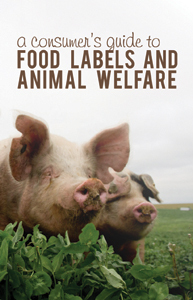Confused about food quality and organic v grassfed v free-range?
By Lyssa Myska Allen, happy meat-eater
People laugh when I describe my eating habits as “eating only happy meat.” But it’s true—my meat has to be grass-fed and roaming on the open plains, my milk grass-fed and unpasteurized (yes, it’s technically illegal, which is ridiculous), my eggs and chicken soy-free and free-range, my pork uncaged and humanely-slaughtered, my fish wild-caught or sustainably farmed—the animals I eat lead happy lives and die in ways that won’t produce stress hormones in their bodies and consequently in my food.
You’ve probably heard more and more lately in the media and from friends about food quality and sourcing, learning more about your dinner’s point of origin. In a recent study, 70 percent of consumers said their food purchasing decisions are influenced by how food is grown or raised. It’s important because it directly affects how your body processes what you eat: for example, corn-fed beef has different, and worse, fatty-acid ratios than grass-fed beef. It’s important for plant-based food too—genetically modified versus heritage—but we’re focusing on animals here.
Short of asking your food supplier, grocer, waiter, or restauranteur where the food came from—which I do regularly and without embarassment—how can you know how your food was treated? You probably already know about sustainable seafood guides like the Monterey Bay Aquarium’s Seafood Watch, but now The Animal Welfare Institute (AWI) has released A Consumer’s Guide to Food Labels and Animal Welfare. The new guide aims to help consumers who purchase meat, dairy, and eggs interpret the meaning of label claims and locate products from animals who were humanely raised and handled.
AWI’s label guide defines the most common claims related to farm animal welfare and places them into one of three categories.
- Certified Labels (such as “Animal Welfare Approved,” “Certified Humane,” and “USDA Organic”) are defined by a formal set of publicly available animal care standards, and compliance with those standards is verified by a third-party audit. Consumers should look for these labels.
- Unverified Claims (such as “cage free,” “free range,” and “pasture raised”) are relevant to animal welfare but the standards are vague and/or weak, and compliance isn’t verified by an independent audit. While not as reliable as certified labels, consumers should choose these products over products without any welfare claims.
- Meaningless or Misleading Claims (such as “natural,” “no added hormones” when used on poultry or pork, and “cage free” when used on meat chicken or turkey) are meaningless or misleading in terms of animal welfare. Consumers should avoid products with these claims.
The guide is available in both pocket-sized and full-length versions by clicking on those links for PDFs.
A final note: At the risk of sounding like a figure-it-out-for-yourself broken record, sometimes you really do have to do your research by talking to the actual supplier. While certifications and labels are important and informative, the USDA Organic standards are not as strict as I am, as well as very expensive to certify, rendering them virtually unobtainable for small, local ranchers and farmers and thereby useless for consumers who try to buy local food.

